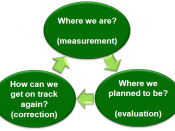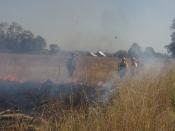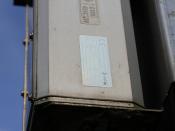An introduction to controlling function:Controlling is directly related to planning. The controlling process ensures that plans are being implemented properly. In the functions of management cycle - planning, organizing, directing, and controlling - planning moves forward into all the other functions, and controlling reaches back. Controlling is the final link in the functional chain of management activities and brings the functions of management cycle full circle. Control is the process through which standards for performance of people and processes are set, communicated, and applied. Effective control systems use mechanisms to monitor activities and take corrective action, if necessary. The supervisor observes what happens and compares that with what was supposed to happen. He or she must correct below-standard conditions and bring results up to expectations. Effective control systems allow supervisors to know how well implementation is going. Control facilitates delegating activities to employees. Since supervisors are ultimately held accountable for their employees' performance, timely feedback on employee activity is necessary.
The controlling process:Step 1. Establish Performance Standards: Standards are created when objectives are set during the planning process. A standard is any guideline established as the basis for measurement. It is a precise, explicit statement of expected results from a product, service, machine, individual, or organizational unit. It is usually expressed numerically and is set for quality, quantity, and time. Tolerance is permissible deviation from the standard. What is expected? How much deviation can be tolerated?Time controls relate to deadlines and time constraints. Material controls relate to inventory and material-yield controls. Equipment controls are built into the machinery, imposed on the operator to protect the equipment or the process. Cost controls help ensure cost standards are met. Employee performance controls focus on actions and behaviors of individuals and groups of employees. Examples include absences, tardiness, accidents, quality and quantity of...


